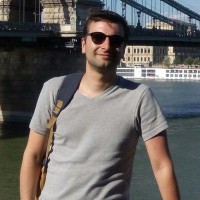An Effective Solution For Data Center Cabling

With the rapid development of data
center, its cabling systems tend to be
more complex and series of problems also happens with it, such as high density
cabling, higher power consumption and so on. It’s obviously unwise and
uneconomical to build/expand a new location to solve these problems. However,
how to deal with them? Now, this article introduces an effective solution to
us—Direct
Attach Cables.
Direct attach cable, DAC for
short, is a form of high speed cable with optical transceivers on either end.
They can be used to connect switches to routers or servers and be usually used
in data center for short-distance transmission between racks.
Generally, according to the
construction differences, the DAC comes in two types: passive DAC and active
DAC.
Passive DAC are suitable for short
distances up to 10 m, while active DAC
has a little longer transmission distance up to 15m at 10Gbps or 40Gbps, because
it has an active component to transmit/receive signal. Passive DAC requires no
power for internal electronics, which avoids consuming power or producing heat.
While active DAC comes in reverse, it needs power to make its internal circuits
work properly.
When it comes to the reason why
DAC is introduced into data centers, it involves in two factors showing its
superiorities.
For one thing, DAC has the
potential to reduce the overall power consumption and heat dissipation, which
help network operators save cost. We all know that denser equipment in the data
center or server rooms will consume more electrical power and produce more
heat, which means more cooling systems are required. While DAC is able to make
it.
For another thing, DAC do not need
patch panels or additional cables when connected to devices, as is the case
with an optical module. The modules on both ends make them sturdy and reliable
as well as space-saving.
In addition, DAC is cheaper than
the regular optics. Because the “transceivers” on both ends of DACs are not
real optics. Compared with the regular optics, they are without the real
components and just used to transmit the optical signals. And of course,
without those expensive optics components, the cost of DACs is much lower.
Thus, though using the same port as an optical transceiver, DACs are
cost-savings and power-saving in short reach applications.
Meanwhile, in today’s markets, in
order to satisfy the growing needs for cost-effective delivery of more
bandwidth, there are mainly three kinds of DAC according to the transmission
rate: 10G SFP+ DAC, 40G QSFP+ DAC and 100G QSFP28 DAC.
10G SFP+ DAC offers the high
density, low cost and low power solutions for today’s 10G Gigabit Ethernet
connections. With its SFP+ interface, this twinax cable allows interconnects
with hot-pluggable optical transceivers and Ethernet switches in data centers.
40G QSFP+ DAC offers a way for 40G
Gigabit short distance connections between QSFP ports switches. As its name
shows, 40G QSFP+ DAC has QSFP+ connectors on both ends. And it uses integrated
duplex serial data links for bidirectional communication. 40G QSFP+ DAC is a
little different from 10G SFP+ DAC. Because it has another two breakout forms:
40G QSFP+ to 4XSFP+ DAC and 40G QSFP+ to 4xXFP DAC. These breakout DACs can be
used to migrate from 10G to 40G.
The 100G QSFP28 DACs are high
speed cable to meet and exceed 100G Gigabit Ethernet, providing connectivity
between devices using QSFP28 ports. The 100G QSFP28 DAC includes QSFP28 to
QSFP28 and QSFP28 to 4xSFP28 breakout DAC. These interconnect cables provide
four channels of high speed differential signals with data rates ranging from
25Gbps up to potentially 40Gbps.
Above all is about DAC. It seems
that it provides a low power consumption and high-speed solution for data
center interconnections. If you want to know more information about it, welcome
to contact us!
About us: We are a sub-brand of Gigalight, we focus on high-end optical network devices, mainly supplying industrial-grade optical transceivers and professional optical interconnection components for data centers. With more than 10 years' experience in optics industry, we now have professional R&D team(more than 100 engineers) and stable supply ability.
Post Your Ad Here

Comments